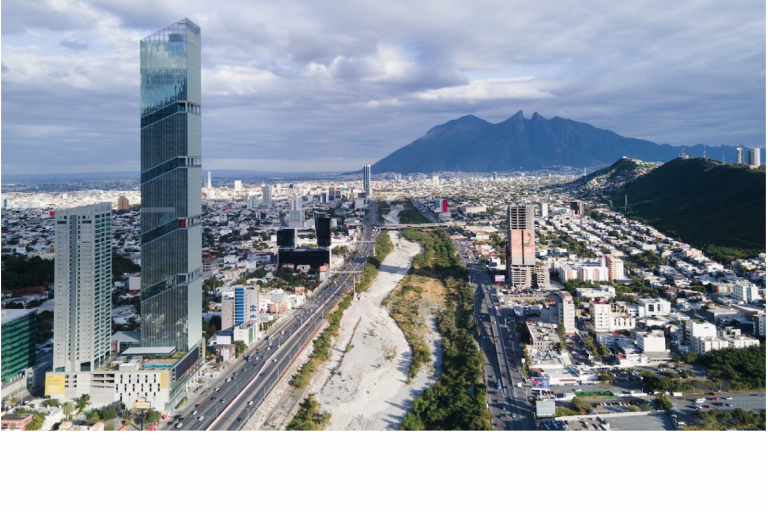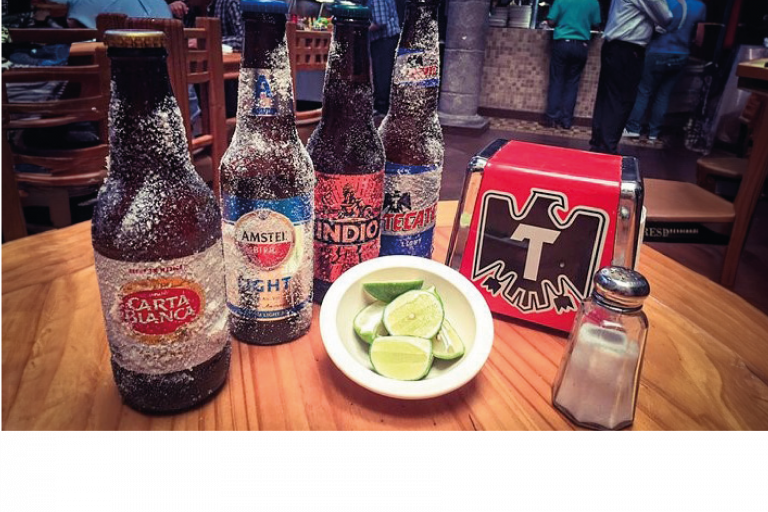THE CITY OF MONTERREY
Monterrey is the capital and largest city of the northeastern state of Nuevo León, Mexico, and the ninth largest city and second largest metro area in Mexico, behind Greater Mexico City. Located at the foothills of the Sierra Madre Oriental, Monterrey is a major North American business and industrial hub, as well as the most populous city in Northern Mexico.
The city is anchor to the Monterrey metropolitan area, the second-largest in Mexico with an estimated population of 5,341,171 people as of 2020, and the second most productive metropolitan area in Mexico with a GDP (PPP) of US$140 billion in 2015. According to the 2020 census, the city itself has a population of 1,142,194.
Monterrey is one of the most livable cities in Mexico, and a 2018 study found that suburb San Pedro Garza García, is the city with the best quality of life in Mexico. It serves as a commercial center of northern Mexico and is the base of many significant international corporations. Its purchasing power parity-adjusted GDP per capita is considerably higher than the rest of Mexico’s at around US$35,500, compared to the country’s US$18,800. It is considered a Beta World City, cosmopolitan and competitive. Rich in history and culture, it is one of the most developed cities in Mexico.
The uninterrupted settlement of Monterrey was founded by Diego de Montemayor in 1596. In the years after the Mexican War of Independence, Monterrey became an important business center. The city experienced great industrial growth following the establishment of the Monterrey Foundry in 1900. The city has prominent positions in sectors such as steel, cement, glass, auto parts, and brewing. Monterrey’s economic growth has been attributed in part to its proximity to the United States-Mexico border and economic links to the United States.
The city of Monterrey is 540 metres (1,770 ft) above sea level. Monterrey translated literally from Spanish to English is “King Mount” or “King Mountain”, and folk etymology claims that this refers to the city’s topography and the large mountains that surround it (actually, the city was named after the wife of Gaspar de Zúñiga, 5th Count of Monterrey). The Santa Catarina River—dry most of the year on the surface but with flowing underground water—bisects Monterrey from east to west, separating the city into north and south halves, and drains the city to the San Juan River and Rio Grande.
The mountains surrounding Monterrey contain many canyons, trails and roads that cross deserts and forests and suitable trails are available to the general public. The Sierra Madre Oriental mountains at the south of the city are included in the “Parque Nacional Cumbres de Monterrey” (National Park), which was added to UNESCO’s Man and the Biosphere (MAB) Program of Biosphere Reserves in 2006.
Landmarks
● The Santa Lucía artificial river, built between 1996 and 2007. It currently joins the Macroplaza with the Fundidora Park.
● The Cerro de la Silla (Saddle Mountain).
● The Macroplaza, the 8th largest city square in the world, is the cultural and administrative heart of the city featuring remarkable monuments, green areas and buildings. Its development was overseen by Ángela Alessio Robles in the 1980s.[98]
● Faro del Comercio (Lighthouse of Commerce), another trademark of the city. This monument beams a green laser around the city at night.
● Barrio Antiguo (lit. Old neighborhood or old town) is the historical urban center of the city of Monterrey. There are preserved houses from the 17th, 18th and 19th centuries. Nowadays bars, cafes, art galleries and restaurants can be found there. In November of every year the Festival Cultural Barrio Antiguo takes place with national and international artists and performers. In recent years this festival has been replaced with the Festival Internacional de Santa Lucia, which now takes place in September.
● The Museum of Modern Art is a post-modern Mexican architecture designed by Ricardo Legorreta with the objective of creating different ambiances for artists and visitors from all around the world.
● Monterrey’s Inukshuk is one of only a handful of authentic examples to be found outside Canada of these stone monuments from the high Arctic. The sculpture was created in situ by the renowned Inuit artist Bill Nasogaluak in 2007 and was a gift to the state of Nuevo León from the Canadian Chamber of Commerce and the Government of Canada.
● Fundidora Park is a large urban park that contains old foundry buildings, 120 hectares of natural ambiance, artificial lakes, playgrounds, alternative cinema (Cineteca), museum (Photo Collection, the State Plastic Arts Collection, Exhibits and Spaces), hotel, auditorium and convention center.
● Puente de la Unidad (sometimes called Puente Atirantado) is a suspension bridge that crosses the Santa Catarina River and joins San Pedro Garza García with Monterrey.
● The Government Palace of Nuevo León is a pink marble of Neoclassical architecture where the governor’s office is located.
● El Cerro del Obispado (Bishopric Hill) which includes a public, scenic lookout called Mirador del Obispado, a Monumental flag and the museum inside the Palacio del Obispado (the Bishopric Palace).
● Cuauhtémoc Moctezuma Brewery (Cervecería Cuauhtémoc Moctezuma), with its 19th-century buildings and where the national Baseball Hall of Fame (Salón de la Fama) is located.
● The Cola de Caballo (Horse Tail) waterfall, on the mountains near the towns of Santiago and El Cercado, about 35 km (22 mi) south.
● On the way to the Cola de Caballo waterfall (Carretera Nacional going to Ciudad Victoria, Tamaulipas), in Santiago, the Presa Rodrigo Gomez or “La Boca” (“La Boca” Dam)[99][100] lays nested between green hills.
● The Museum of Mexican History[101] is the most representative and visited museum of the North of the Republic, fulfilling its purpose of spreading the historical content of the Mexican cultural heritage.
● LABNL Lab Cultural Ciudadano is a citizen laboratory located in the center of the city. This public space of collective creation develops projects for the common benefit of local communities.
Cuisine
The most traditional dish from Monterrey is cabrito, kid goat cooked on embers. Other local dishes and customs that perhaps date back to the Crypto-Judaism of Monterrey’s founding families, are the “semita” (bread without leavening), the capirotada dessert (a mix of cooked bread, cheese, raisins, peanuts, and crystallized sugarcane juice), and the relative absence of pork dishes. Another famous local dish is machacado con huevo.
Carne asada on weekends remains a tradition among Monterrey families. It is usually served with grilled onions, baked potatoes and sausages or chopped as tacos. Locally brewed beer and cola are an almost mandatory part of the weekly ritual. “Glorias” and “Obleas,” made from goat milk, are both traditional Nuevo León desserts.
Monterrey has a wide gastronomic variety due to its climate geography, climate, texture, a mixture of ethnics groups, and their influences, a series of unique dishes have been created through more than 400 years of history.
More information could be found in https://en.wikipedia.org/wiki/Monterrey






